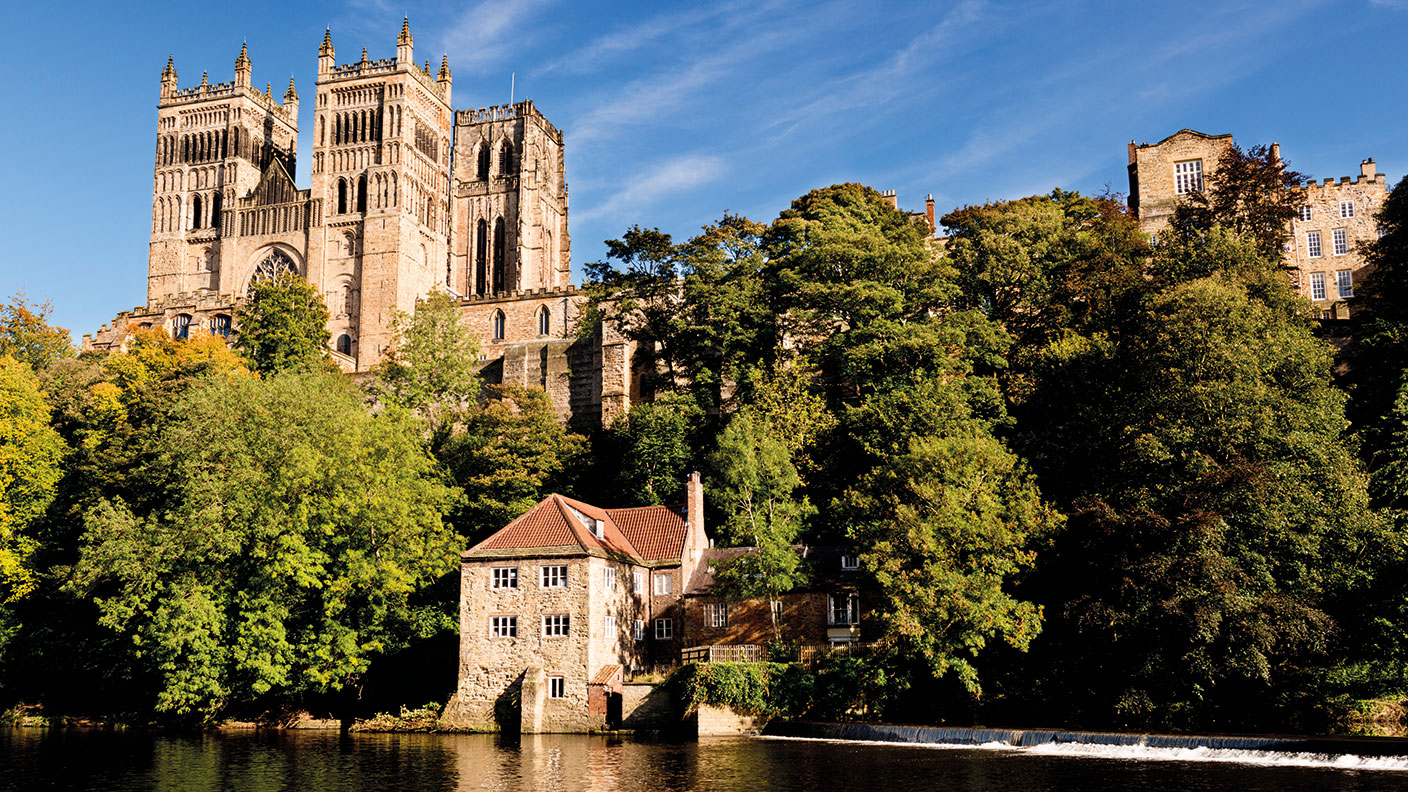Escape lockdown in a castle in Durham
When restrictions ease, the historic city will be a perfect spot to stretch your legs, says Matthew Partridge.


I returned to Durham a few years ago, for a reunion at my old college, St Cuthbert’s, and I’m pleased to say the city hadn’t changed a bit. When the lockdown has ended, the historic city will be well worth a visit. Travel writer Bill Bryson, in his bestselling Notes From a Small Island, says that Durham is “the best part of the country, it should unseat London as the nation’s capital… if you have never been to Durham, go at once. Take my car. It’s wonderful.” I’d take his advice.
A stroll through the city
Durham is architecturally dominated by its cathedral, which houses the relics of Saint Cuthbert, the patron saint of Northumbria. Regarded as one of the finest examples of Norman architecture in Europe, the cathedral was declared a World Heritage Site by Unesco in 1986, along with Durham Castle. The castle, which was originally built on the orders of William the Conqueror, was given to Durham University at its foundation, and is open to the public for tours.
The city is small enough to stroll through in an afternoon, and an enjoyable stroll it is too, with its mix of Georgian and Victorian architecture. The River Wear, which bisects the city, is a good spot for getting your bearings and for striking views of the city – either from one of the three bridges that cross the water or from a rented rowing boat or pleasure cruise. The remains of Finchale Priory, which was an important religious centre until Henry VIII’s dissolution of the monasteries, are worth visiting too – they are only four miles from the city centre.
MoneyWeek
Subscribe to MoneyWeek today and get your first six magazine issues absolutely FREE

Sign up to Money Morning
Don't miss the latest investment and personal finances news, market analysis, plus money-saving tips with our free twice-daily newsletter
Don't miss the latest investment and personal finances news, market analysis, plus money-saving tips with our free twice-daily newsletter
A bit further afield, the Beamish “living museum”, an authentic recreation of a mining village at the turn of the 20th century, makes for a good day out too. Local stately homes include Auckland Castle, and lovers of fine art should head for Bowes Museum, just 30 miles away.
Where to stay
There are several outstanding hotels in Durham itself. The hotel chain Radisson Blu, for example, has an upmarket, four-star establishment in the city with views of the River Wear. Or there’s the Indigo, a quirky four-star hotel in a magnificent Victorian-era building that was once Durham University’s administrative centre.
A bit further out, nearby Sedgefield is home to the Hardwick Hall hotel, which is regarded as the area’s premier luxury hotel. Dating from the 17th century and adjoining Hardwick Country Park, it boasts spacious, well-decorated rooms – the Celebration Suite has its own lounge and garden. The restaurant has a very good reputation and is worth visiting for high tea even if you are staying elsewhere.
Alternatively, consider a stay in one of the two state rooms at Durham Castle. The Chaplain’s Suite has a double bedroom, bathroom and sitting room, with room for additional guests, and costs £200 a night. The real jewel in the crown, though, is the Bishop’s Suite, which has a four-poster bed and elegant 17th-century tapestries.
Get the latest financial news, insights and expert analysis from our award-winning MoneyWeek team, to help you understand what really matters when it comes to your finances.

-
 How cancelling unused direct debits could boost your pension by £37,000
How cancelling unused direct debits could boost your pension by £37,000A new year refresh of your spending could save you money and help boost your pension pot.
-
 NS&I cuts interest rates on 8 savings accounts
NS&I cuts interest rates on 8 savings accountsNS&I will now offer less attractive interest rates for customers wishing to lock their savings away to grow for one, two, three or five years.
-
 Should you invest in rum?
Should you invest in rum?Analysis Old rum could be worth thousands of pounds. Is it worth auctioning off?
-
 10 cheapest countries to visit
10 cheapest countries to visitTravel We look at the cheapest countries to visit where your money will stretch the furthest without compromising on quality
-
 Best cards for travel abroad
Best cards for travel abroadAdvice Whether you’re going on holiday or you go abroad regularly, we weigh up the best cards for travel.
-
 A South African adventure
A South African adventureReviews From buzzy Johannesburg to big game drives, South Africa has it all, says Katie Monk
-
 Villa Gaia Rock: perfect harmony in Corfu
Villa Gaia Rock: perfect harmony in CorfuReviews Blend in with your surroundings at the new Villa Gaia Rock in Corfu.
-
 Holiday reading: five books to make sense of the 1970s – and the 2020s
Holiday reading: five books to make sense of the 1970s – and the 2020sReviews With raging inflation, booms, busts and political crises, the 1970s has a reputation as a relentlessly awful decade. But things aren’t that simple, says Merryn Somerset Webb. Here, she picks five books to put it all in context.
-
 Indulge your wild side with a safari in deepest Kent
Indulge your wild side with a safari in deepest KentReviews Get up close to the animals at Port Lympne Hotel and Reserve, says Matthew Partridge
-
 Two stunning Sicilian villas
Two stunning Sicilian villasReviews There is so much to see in Sicily, says Chris Carter. Villa stays allow you to take it all in.